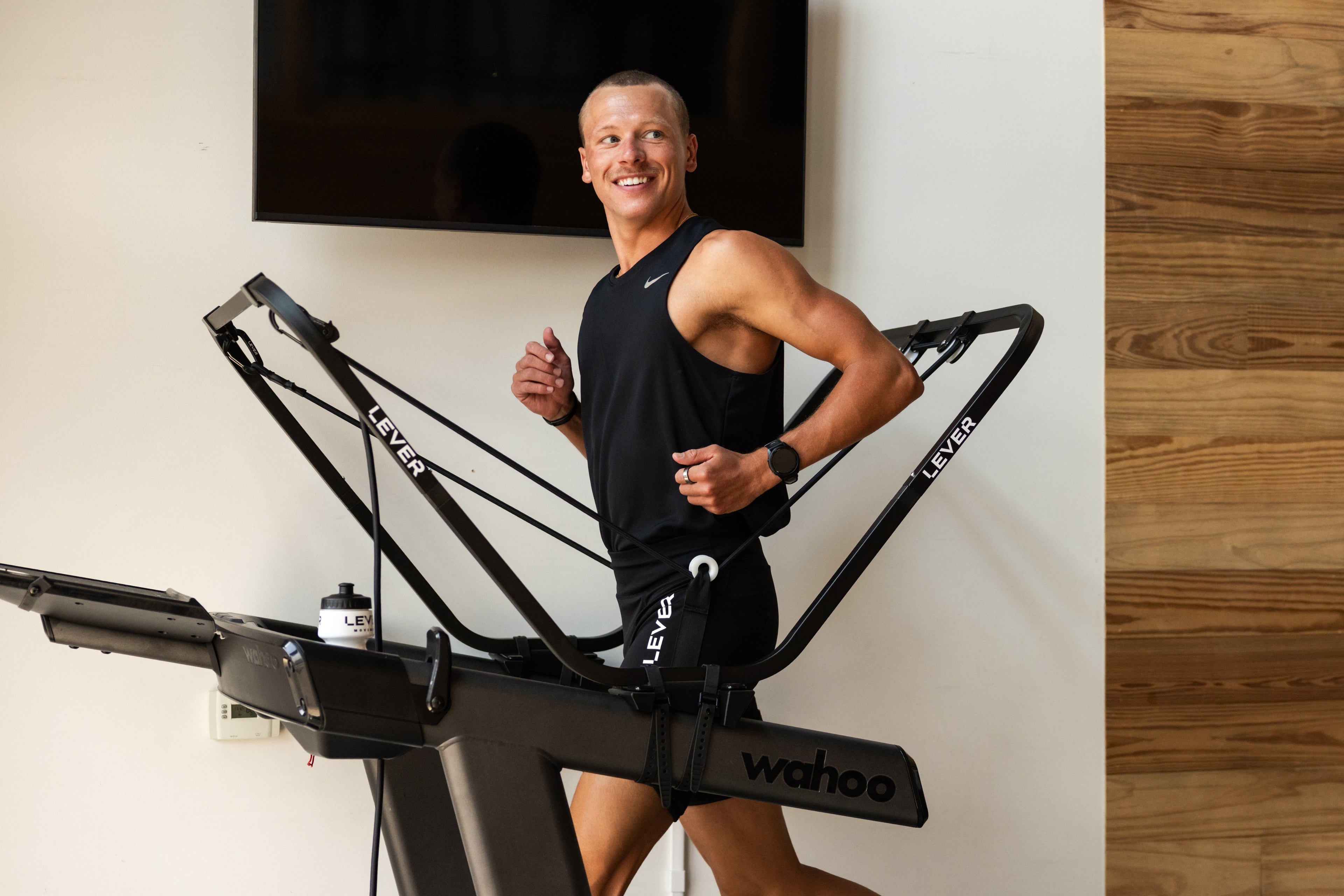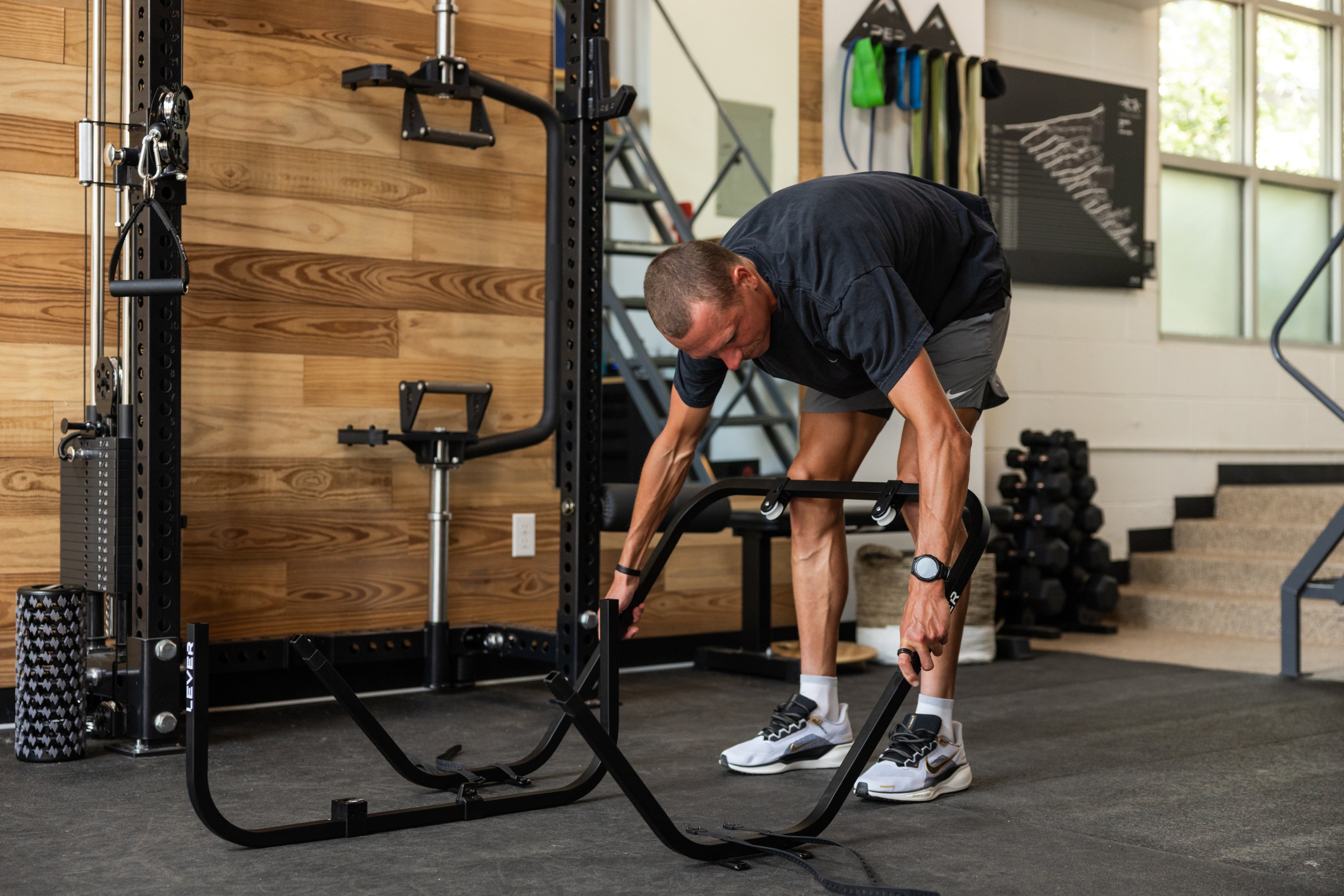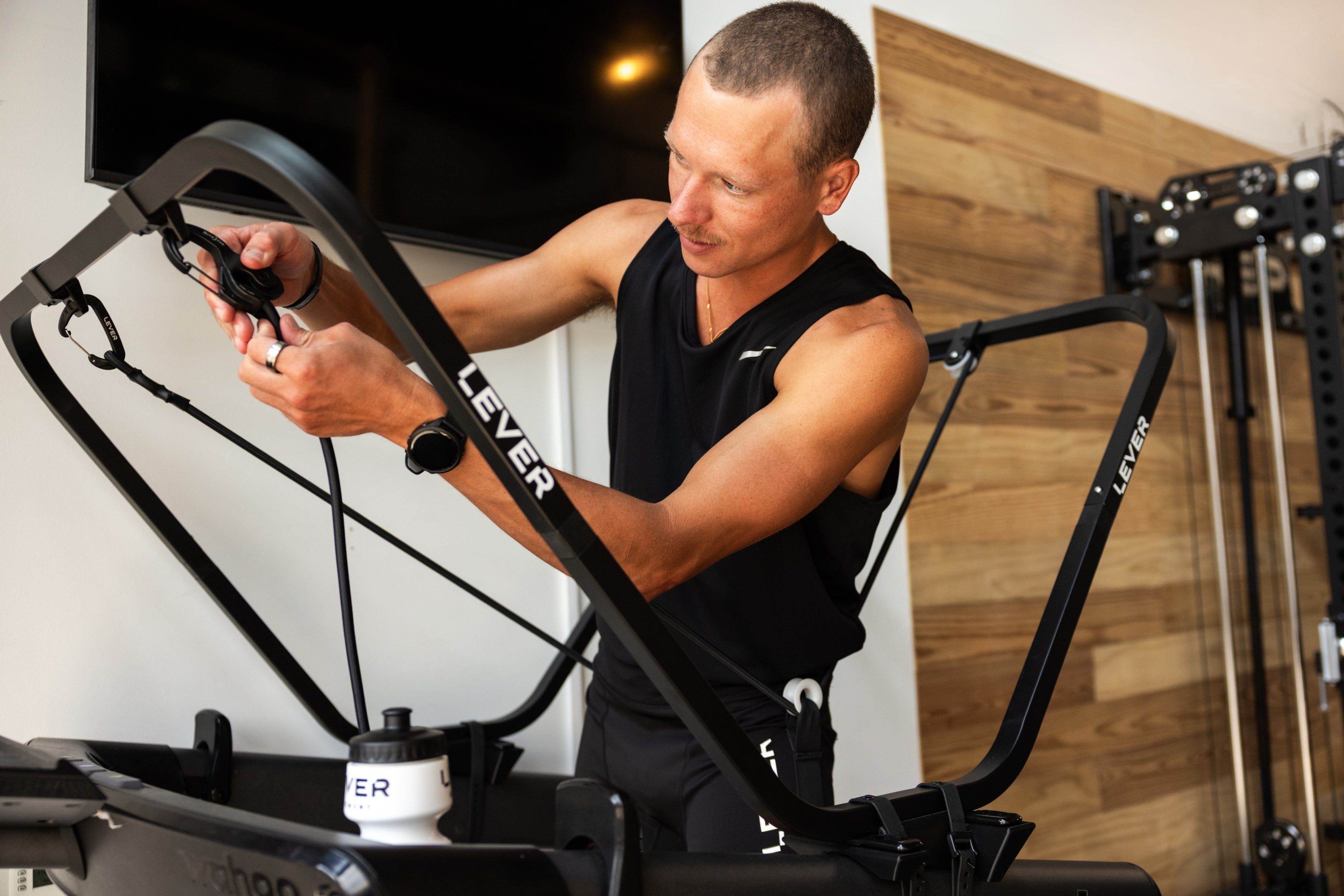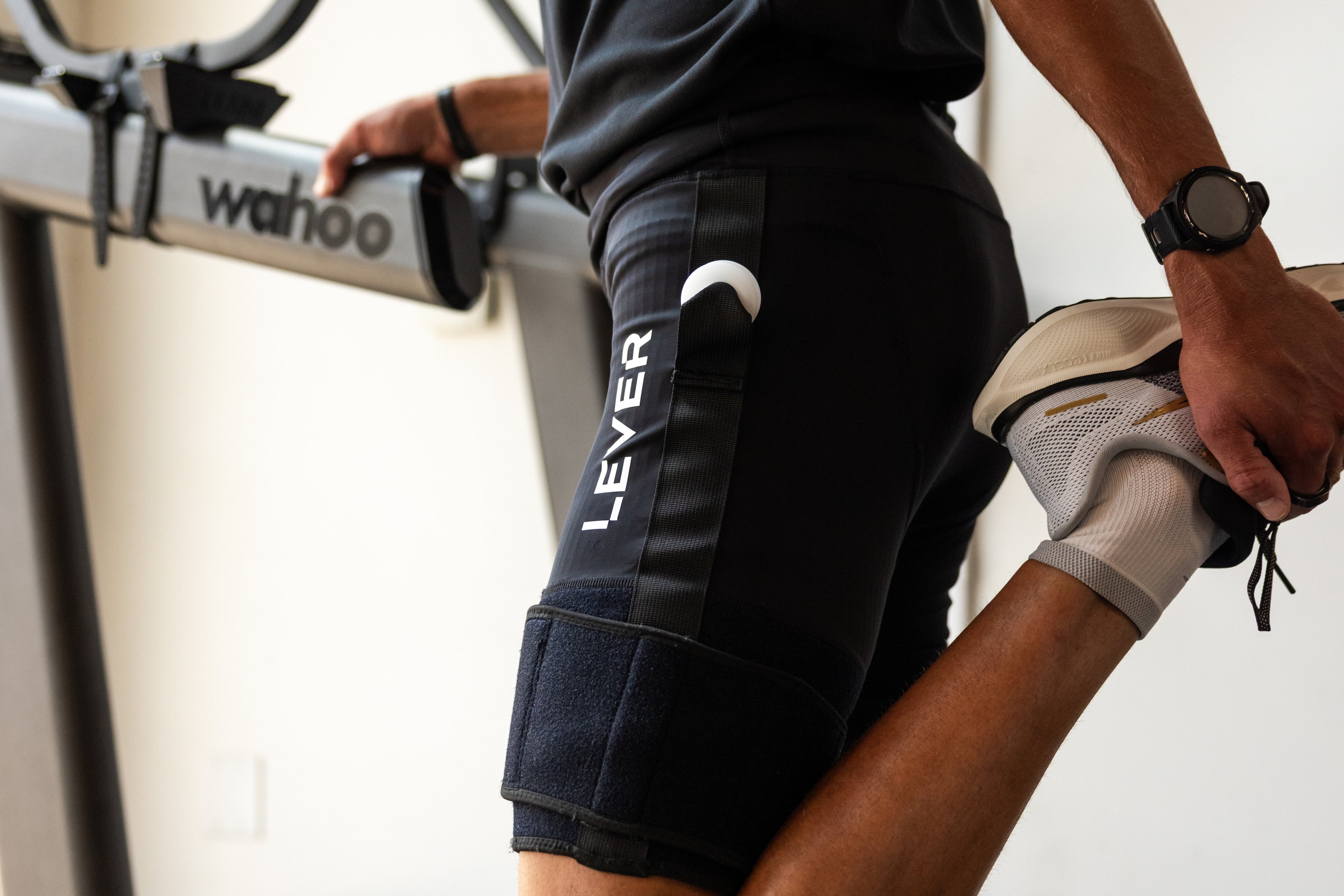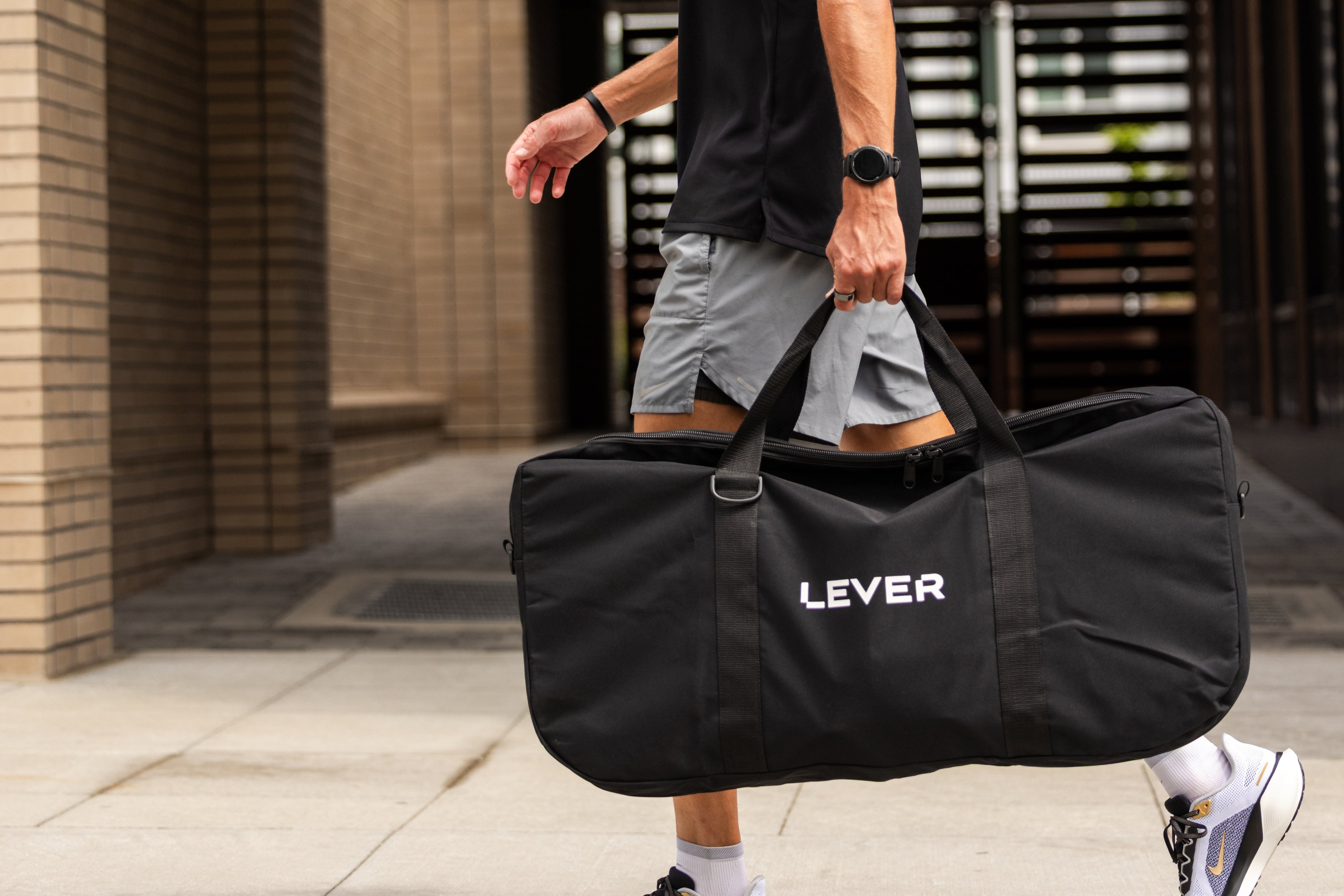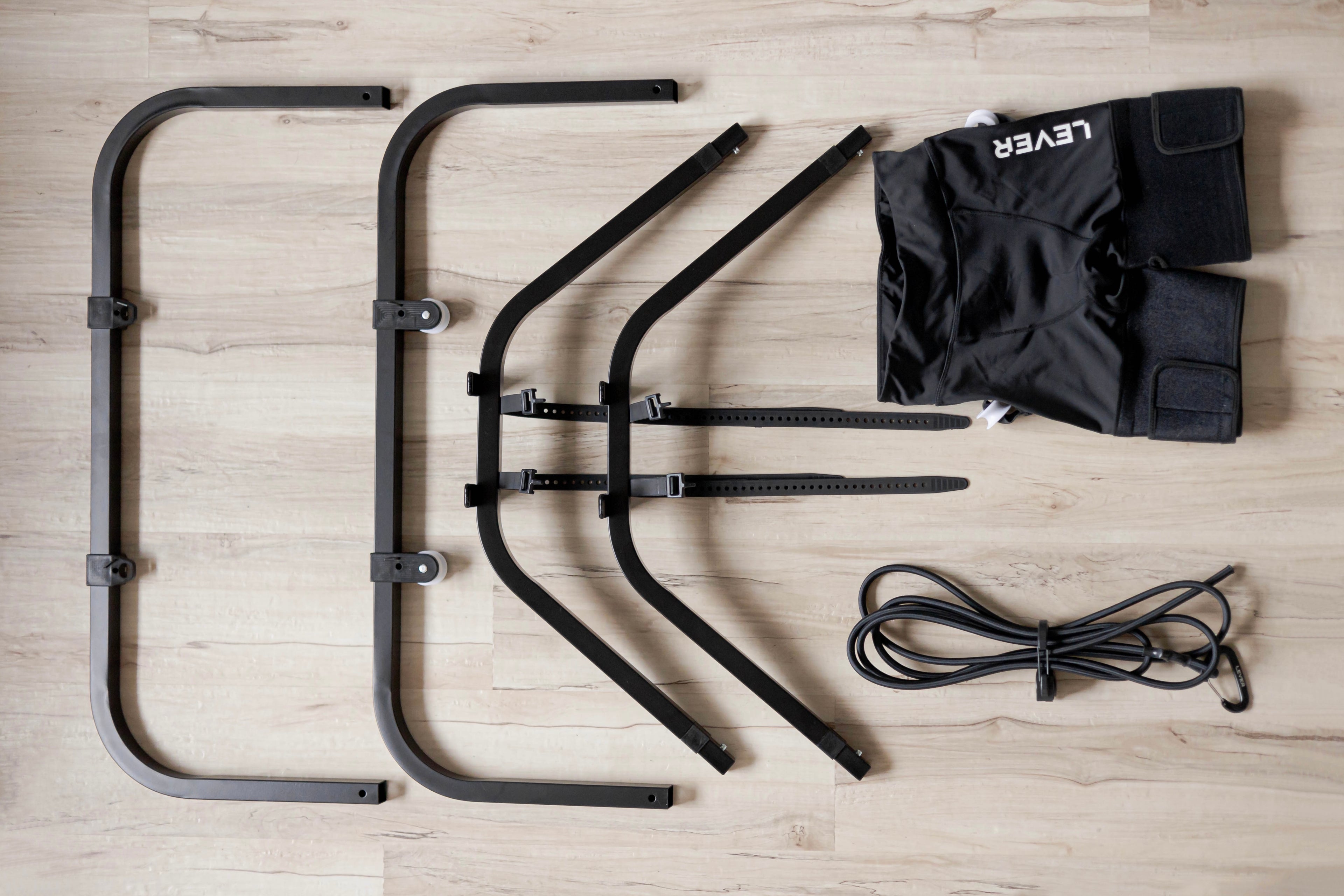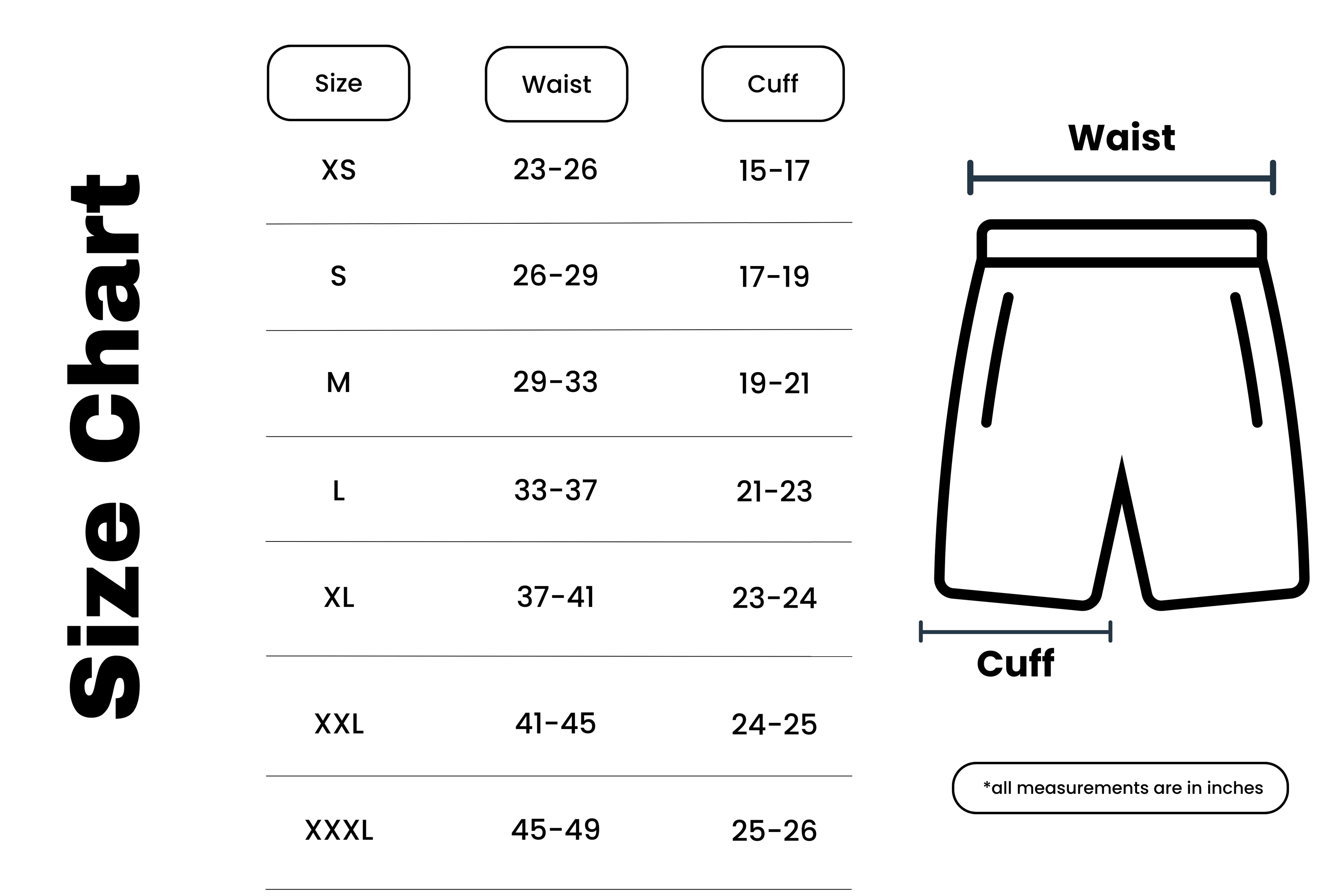Many of my clients have just been cleared by their Ortho or Physical Therapist to “return to training.” If you ask those athletes if they are ready to return to training, the overwhelming majority will tell you “NO!” Even if the previously damaged/injured structures are objectively healed and stronger, there is a disconnect between what the tissues can tolerate and the athlete’s trust in those tissues to not only do what they are asked, but to not result in re-injury. For a personal example in my clinic, a triathlete was just finished rehab after 3 foot surgeries, was cleared to begin running, but she did not even want to try. She was content with walking, and perhaps maybe in a few months testing out a slow jog. However, with LEVER in my clinic, we did 2 sessions on the LEVER to get her used to it, keeping the speed at a relatively fast walk for her (about 3-3.5 mph), but alternating the incline between 5% and 2% for about 15-20 minutes. When I increased the incline, she had to apply more force into the treadmill (through her foot) in order to maintain her position on the belt, effectively re-teaching her nervous system to “trust” itself with the responsibility of propelling her body forward, and building confidence in her body’s ability to do the job she was afraid to try. In our 3rd session (about 10 days after the first session), instead of increasing the incline, I reduced the incline to 0, but told her to increase the speed to a level she could NOT maintain a comfortable walking pace. Without hesitation, she shifted out of a walk, and into a trot, and then into a jog. She held that pace for about a minute, but she had a huge smile on her face. Then she asked to do another minute, and she voluntarily increased the speed higher. Giving the athlete the opportunity, and the responsibility, of “fixing” the disconnect in trusting her body has been a game-changer, and this would have been very difficult without the LEVER. We’ll repeat this process with more time jogging, then more speed, and finally more of her body weight. She’s actually excited to get back to running because she isn’t worried about re-injury or foot-pain when she lands or pushes off. Big win.
2. Improved foot-strike and cadence, and reduced ground contact time (GCT)
I recently started using a foot pod to get some additional metrics for both my clients and myself when running, and it has been very interesting comparing my client’s foot-strike position as well as ground contact time when running outdoors and running on a treadmill using the LEVER. For my clients who tend to heel strike far out in front of their body, a few sessions on LEVER has helped to shift their foot contact closer to their center of mass and less out in front of them. For individuals who really struggle with this, I slide the LEVER (I have it mounted on the Transfer Tower) forward towards the front of the treadmill, giving the athlete less belt in front of them to land on, forcing them to land closer to their body and preventing them from striking the ground with just the heel, and slapping the foot down in front of them. There are many ways to run, and there are plenty of elite runners who are heel strikers, but for many athletes, striking the heel on the ground way out in front of them produces a breaking force that then has to be reversed with an excessive roll from the heel to toe at push-off. It isn’t exactly like hitting the gas pedal and then the brake pedal alternately every other second, but that is a helpful visualization to see the potential problems with this type of running gait. Positioning the LEVER on the treadmill appropriately for each of my athletes can help reinforce better ground contact positions, and help clean up excessive heel striking and braking forces through the leg cycle during running gait. This often has an effect on reducing ground contact time, which I find very helpful for many athletes who tend to have relatively long foot contact time. For athletes who struggle to increase their cadence or speed up their GCT, a few runs on the LEVER every week can introduce some variety of stimuli to not only improve mechanics, but also potentially increase resiliency and tolerance to training volume by giving the body different stimuli to adapt to.
3. Inclines and Within Session Recovery
My favorite type of workout on the Lever has been timed reps at a set speed and incline. This could be just a coincidence, but it could also be related to my love of doing hill repeats. I have either long hill repeats (about .33 of a mile) or a short hill repeats (.19 of a mile) programmed every other week in my training, but nothing has been able to kick my butt like reps of a consistent incline of 5% for 2 minutes at 10mph, or an incline of 10% for 1 minute at 10mph. The hill reps I do outside take me about 2 minutes for the long hill, and about 1 minute for the short hill, so the timed effort on the Lever has been an easy alternative for me to adjust to. The biggest difference I’ve noticed, however, is that my recovery time when I do the long hill repeats outside can be up to 3-5 minutes before I feel ready for the next rep (heart rate back to baseline of about 150 bpm) and 1:45-2:00 minutes between reps on the short hills, but with the LEVER, I can cut my recovery time down to 2 minutes or less for the 2 minute reps, and 1 minute or less on the 1 minute reps. Since I have the LEVER mounted on the Transfer Tower, during the incline portion of the treadmill rep, I’m reducing zero body weight at the higher incline, but during the recovery portion between reps, I drop the incline back down to 0%, and the LEVER goes to work reducing some of my body weight, and allowing my heart rate to return to “baseline” (about 150 bpm). This return to baseline happens much faster so it allows me to start my next rep sooner and accumulate more quality in a given amount of time. The same volume of quality outside requires about twice the time/distance of recovery compared to the volume of quality of LEVER “hills.” For me, this has been an awesome addition to my training tools and options, and one I’m excited to implement in the programming for some of my patients (runners and triathletes) in preparation for hilly races, or as a way to train power and speed without excessively stressing the soft tissues and joints with the eccentric load of running down hill after running up hill.











